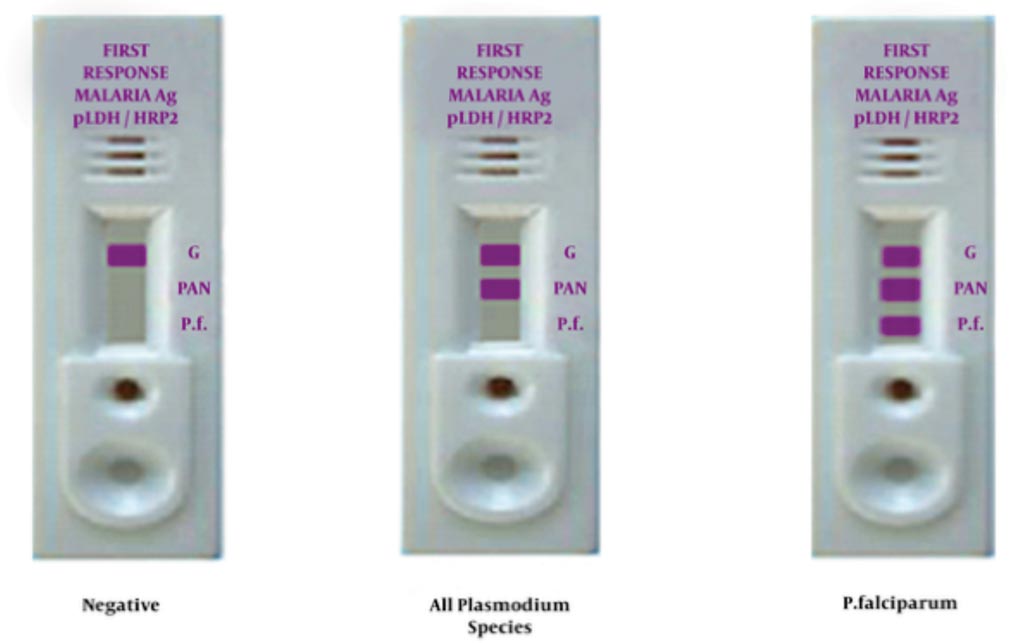Malaria Rapid Tests Remain Positive after Drug Treatment
By LabMedica International staff writers
Posted on 24 Jun 2018
Rapid diagnostic tests (RDTs) are increasingly becoming a paradigm for both clinical diagnosis of malaria infections and for estimating community parasite prevalence in household malaria indicator surveys in malaria-endemic countries.Posted on 24 Jun 2018
The antigens detected by RDTs are known to persist in the blood after treatment with anti-malarial drugs, but reports on the duration of persistence and the effect this has on RDT positivity of these antigens post-treatment have been variable.

Image: Rapid diagnostic tests for malaria (Photo courtesy of the Mashhad University of Medical Sciences).
Scientists at the University of Oxford (Oxford, UK) reviewed systematically publications on the persistence of antigenaemia and positivity of RDTs after treatment was conducted using the search term “antigen persist RDT”. The Google Scholar search yielded more than 4,100 results, sorted by relevance. The proportion of individuals who still tested positive via RDT was extracted for each day of follow-up and analyzed as a time series.
The team found that half of RDTs that detect the antigen histidine-rich protein II (HRP2) are still positive 15 (5–32) days post-treatment, 13 days longer than RDTs that detect the antigen Plasmodium lactate dehydrogenase, and that 5% of HRP2 RDTs are still positive 36 (21–61) days after treatment. The duration of persistent positivity for combination RDTs that detect both antigens falls between that for HRP2- or pLDH-only RDTs, with half of RDTs remaining positive at 7 (2–20) days post-treatment. The study showed that children display persistent RDT positivity for longer after treatment than adults, and that persistent positivity is more common when an individual is treated with artemisinin combination therapy than when treated with other anti-malarial drugs.
The authors concluded that RDTs remain positive for a highly variable amount of time after treatment with anti-malarial drugs, and the duration of positivity is highly dependent on the type of RDT used for diagnosis. Additionally, age and treatment both impact the duration of persistence of RDT positivity. The results suggest that caution should be taken when using RDT-derived diagnostic outcomes from cross-sectional data where individuals have had a recent history of anti-malarial treatment. The study was published on June 8, 2018, in the Malaria Journal.
Related Links:
University of Oxford









 assay.jpg)




